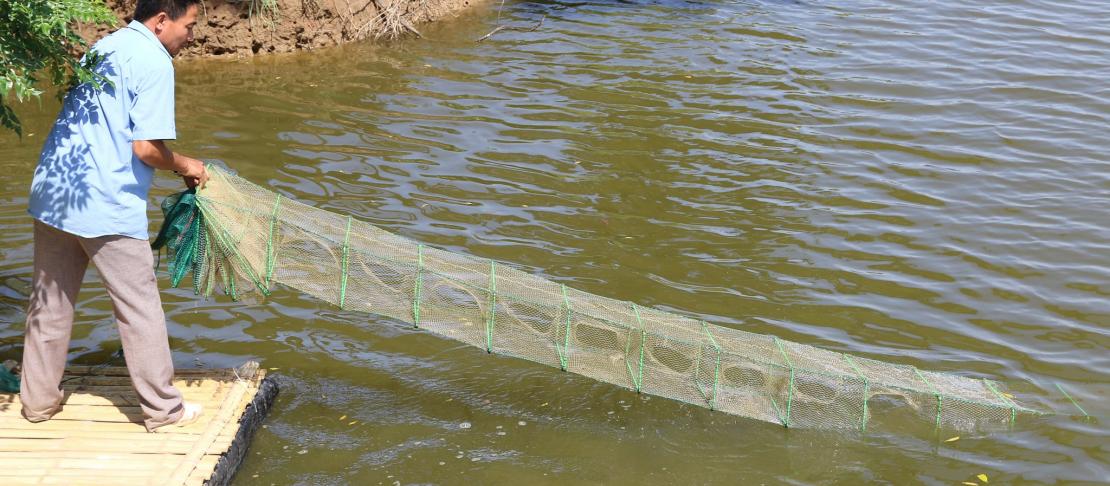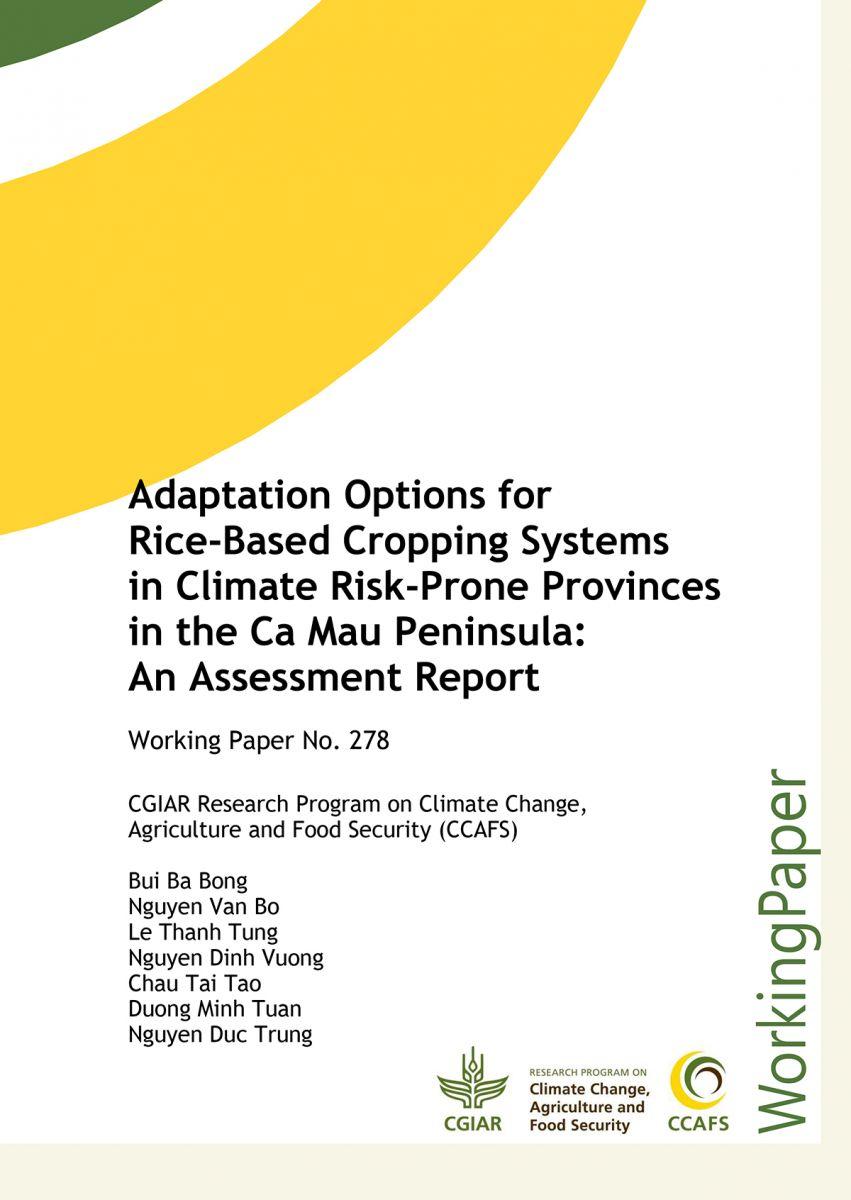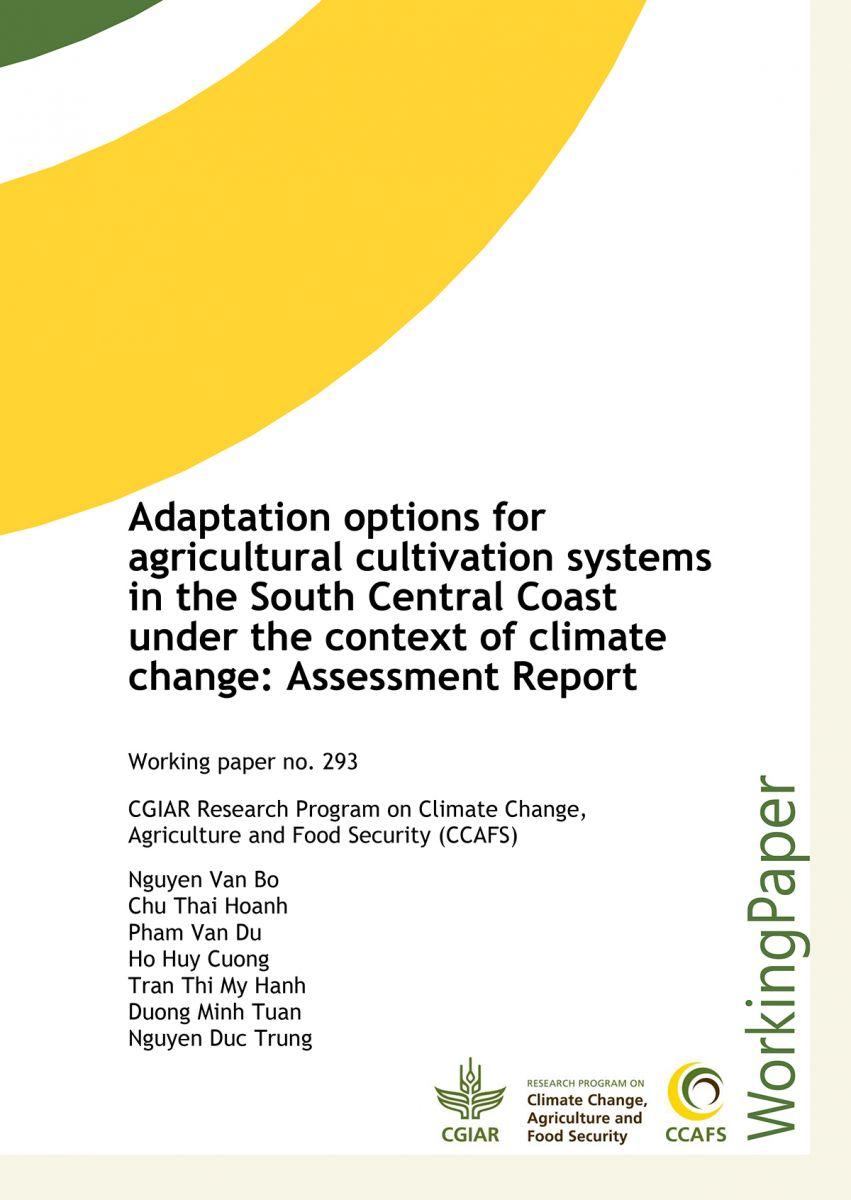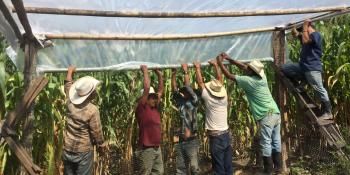What can Vietnamese farmers grow aside from rice?

Rice alone may no longer save Vietnamese farmers from climate change impacts. Farmers are adapting by converting some of their rice lands to other cropping systems.
The Vietnamese government and the CGIAR Research Program on Climate Change, Agriculture and Food Security (CCAFS) have identified agricultural adaptation strategies during their consultation meetings and field visits in Ca Mau Peninsula and South Central Coast in the last two years. One strategy was converting cost-intensive rice lands vulnerable to climate change into resilient land-use systems that generate the highest possible yields.
An example of such a system is rice-aquaculture, which is being practiced in Ca Mau Peninsula. In the South Central Coast, some farmers shift from traditional rice varieties into short-term rice crops, fruit trees, and industrial produce such as rubber and cashew. The goal of these strategies is not for Vietnamese farmers to completely abandon rice farming. After all, rice remains a major agricultural sector in Vietnam, generating billions of dollars in exports alone.
All these were discussed in two working papers specifically produced for the regions visited. These were published by CCAFS in collaboration with the Department of Crop Production, provincial Department of Agriculture and Rural Development offices, and other key government partners.
Alternatives for rice in Cau Mau Peninsula
The rice-shrimp model has shown an immense growth rate since the early 2000s due to its adaptive capacity to climate change and high economic efficiency. This model combines the rice and shrimp farms in one area or grows one then the other in a series of batches depending on the farmer’s preferences.
Click here to read the publication |
Farmers can add fish, giant freshwater prawns, and white-leg shrimp to this model to have multiple sources of income. They can also grow marketable fruits such as banana, pineapple, grapefruit, orange, and star apple depending on the degree of rice conversion—it can be a total or substantial shift. Some of these alternatives can even be designed to allow farmers to revert to rice production if the need arises.
With the integration of aquaculture in rice lands, investments in water infrastructures will be needed more than ever. Canals and dredges can be built to store water during the rainy season. Sea dikes can also be established along the coastal areas to control the flow of water and prevent floods.
Adaptation is not pure conversion, though. If rice prices are not favorable, farmers can adjust their planting calendars and shift from triple-rice into double-rice farming with other short-term crops. Triple-rice can be retained since it builds up the amount of alluvium, which reduces the use of fertilizers in the farms.
Diversified cropping systems in South Central Coast
The South Central Coast has diverse landscapes that can house various land-use systems. The unfavorable climate conditions may be a hindrance, but certain adjustments can transform these systems into profitable and climate-resilient livelihoods.
In the mountains and mid-lands, which account for 65% of the total natural area in this region, farmers can venture into livestock raising, coconut and mango plantations, and rubber and cashew production. The proposed crop production plans for the South Central Coast include several measures to enable them to capitalize on these alternatives.
Click here to read the publication |
For instance, farmers can grow grass and maize as feed for the livestock. Grass can be grown in unflooded rice lands during the rainy season while maize can be rotated with rice and annual crops in suitable areas. In the case of rubber, farmers can continue planting on productive areas while they are encouraged to convert unproductive lands into grasslands or tree plantations. They can also intercrop cashew with custard apple and pomelo in forest lands.
In other landscapes, farmers in the delta who will continue with rice production must plant short-term rice varieties to avoid the onset of salinity intrusion, floods, and other extreme weather events. Otherwise, they can grow grass, fruit trees, and vegetables in the rice lands. Fisherfolks, meanwhile, can transform coastal areas into lucrative tourism-fisheries enterprises.
Read more:
- Working paper: Adaptation Options for Rice-Based Cropping Systems in Climate Risk-Prone Provinces in the Ca Mau Peninsula: An Assessment Report.
- Working paper: Adaptation options for agricultural cultivation systems in the South Central Coast under the context of climate change: Assessment Report.
- Blog: More Vietnamese households adopt integrated aquaculture systems as a climate-smart practice
Renz Louie Celeridad is the Junior Communications Specialist for the World Agroforestry (ICRAF) Philippines and Communications Consultant for CCAFS Southeast Asia.





